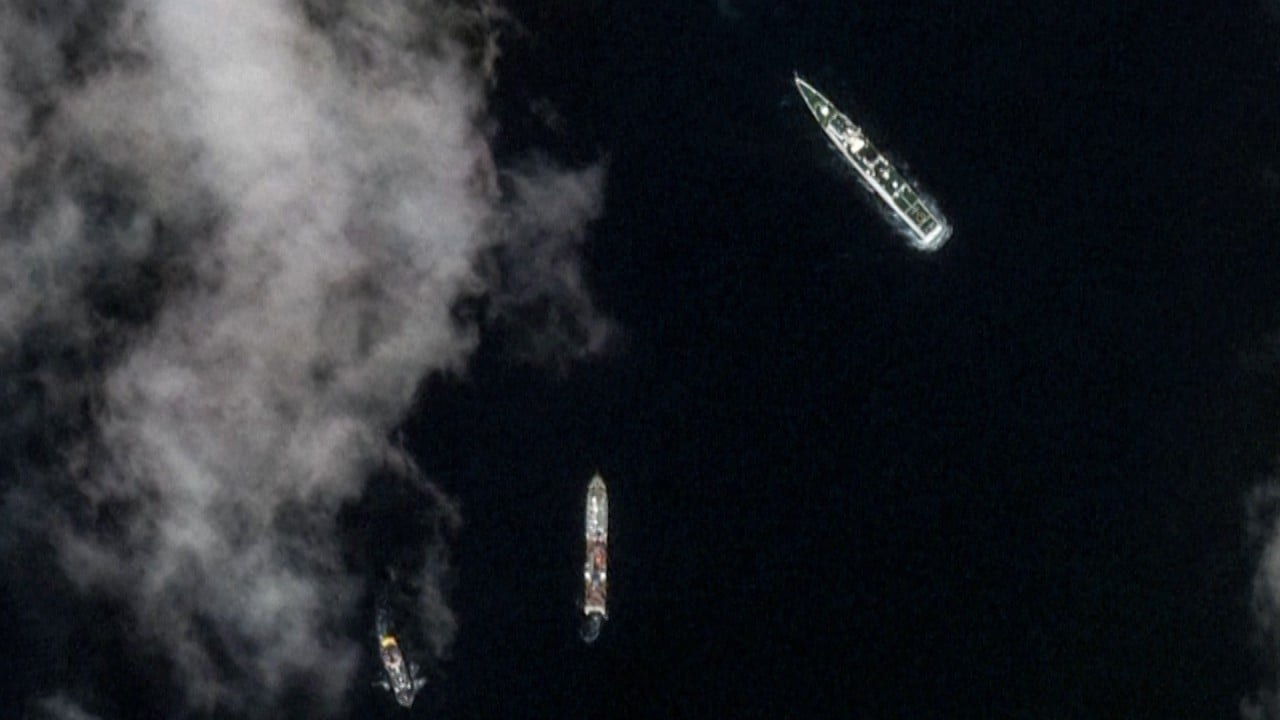
South China Sea: Beijing may get ‘up close’ as US-Philippine Balikatan drills send ‘deterrent signal’ on contested claims
- Annual exercises starting on Monday set to venture into Manila’s EEZ for the first time, in areas claimed also by Beijing
- Location is ‘deterrent signal’ to Beijing as tensions spike with Manila, analyst says, while another sees Washington readying for hot conflict
The drills will extend beyond the 12 nautical mile (22.2km) territorial waters of the Philippines, into what it regards as its exclusive economic zone, lying another 200 nautical miles further afield. Parts of the EEZ overlap with waters claimed by Beijing under its “nine-dash line”.
Chen Xiangmiao, an associate research fellow at the National Institute for South China Sea Studies, said the location of the exercise sent a clear signal to Beijing.
“The choice of location in disputed waters [claimed both by the Philippines and China] shows that the US-Philippine exercises are becoming more targeted at China,” Chen said.
“China and the Philippines are competing over the control of these disputed sea areas, the US is showing support to the Philippines and sending a deterrent signal to China through the drills,” he added.
Chen also noted that it would not be the first time that the Philippines had carried out drills with the US beyond its territorial waters.
Earlier this month, naval vessels and aircraft from the US Indo-Pacific Command, Japan and Australia joined Philippine defence forces for their first “multilateral maritime cooperative activity” within Manila’s EEZ.
However, it will be a first for the Balikatan exercise, which is likely to further unnerve Beijing, according to Chen.
Tensions between Beijing and Manila have spiked in recent months after several confrontations in contested areas of the South China Sea, especially near the Second Thomas Shoal, where the Chinese coastguard has been accused of blocking Philippine supply vessels and firing water cannons at them.
The Philippine-controlled shoal is part of the Spratly Islands chain claimed by both countries and called Nansha by China.
Chen said that if the Balikatan drills entered waters claimed by China, Beijing would take measures such as “tracking and identification”.
According to Hu Bo, director of the South China Sea Strategic Situation Probing Initiative (SCSPI), a Beijing based think tank: “China will definitely remain vigilant and closely monitor the situation.”
Tasks laid out for the drills include the simulated retaking of islands occupied by hostile forces and precise strikes. This showed the allied militaries were preparing for a possible hot conflict over disputed islands in the South China Sea or Taiwan, Chen and Hu said.
Chen said the tasks were “based on real threats” seen in disputed waters as well as “hypothetical scenarios”. The scale of this year’s exercise, which will involve up to 17,000 participants, was also worthy of note, he said.
In another first, French troops will also be joining the traditionally bilateral exercise launched in 1991. More than a dozen other countries, including those in Southeast Asia and Europe, will act as observers.
Furore in Philippines over Duterte’s ‘treasonous’ South China Sea deal with Xi
The US military last year secured access to four new staging sites in the Philippines, three of which will be part of this year’s Balikatan exercises. One operation will be conducted out of Lal-lo airport in Cagayan province to secure one of the Philippines’ northernmost islands facing Taiwan. Another will use an airbase on Balabac island to enact the defence of Palawan province, located opposite the Spratly Islands, according to a report by The Washington Post.
Hu at the SCSPI said the use of new military bases during the drills showed the US was “strengthening its military presence and access” in the Philippines, aimed at preparing for possible military conflicts in both the Taiwan and South China Sea scenarios.
Beijing sees Taiwan as part of its territory awaiting reunification, by force if necessary. The United States, like most countries, does not recognise the self-ruled island as independent, but is opposed to any attempt to take it by force and remains committed to supplying Taipei with weapons.
Song Zhongping, a Chinese military commentator, also said the US seemed to be preparing for possible hot conflicts with Beijing, including in the Taiwan Strait.
China might take measures such as “close-in reconnaissance” in response to the drills, Song said.


